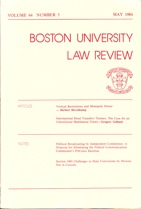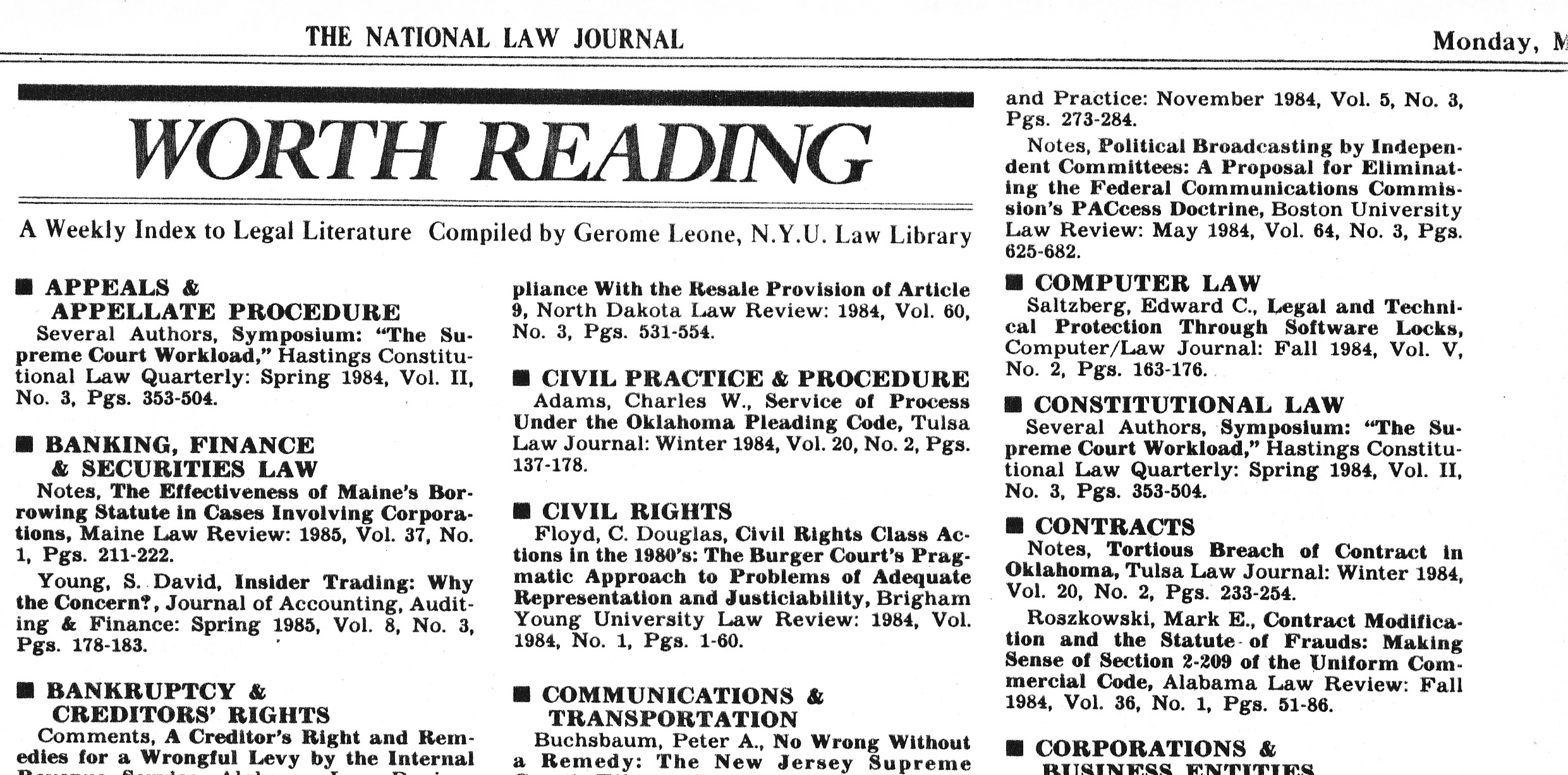A Proposal for Eliminating the Federal Communications Commission’s PACcess Doctrine
by Kenneth M. Kwartler
Published May 1984
64 Boston University Law Review 625
Author’s Introduction (2013)
In May 1984, the United States was heading into a hotly-contested national election. Our political landscape was still reverberating from the initial impact of recent and extensive campaign finance law reforms. These reforms spurred (among other things) the emergence of political action committees (PACs), which had already begun to exert major influence over our political process in ways still coming into focus. In these regards, it was a time very much like today.
The Federal Election Campaign Act of 1971 curtailed individual campaign contributions while placing fewer restrictions on committees. As a result, PACs grew markedly in number and influence, and seized the political spotlight.
In the 1980 election, the National Conservative Political Action Committee (NCPAC), the first PAC to grab national headlines, was credited with a leading role in the defeat of six leading liberal U.S. senators. Concerns arose across the political spectrum about the influence that such PACs might yet wield both in elections and elected officials’ subsequent conduct.
Federal communications policy was largely unprepared for the emergence of PACs. Moreover, the Federal Communications Commission’s (FCC) first efforts to address PAC political broadcast ads within existing laws was uncertain at best, and appeared to create new loopholes potentially rife for abuse.
Amidst this evolving political terrain, I published the following legal analysis of the situation in the May 1984 issue of The Boston University Law Review, where I served as an Editor. It was the Review’s first article to focus on communications law. In November 1984, The National Law Journal cited the article in its “Worth Reading” section.
In light of its length, for ease of review you can access the article by sections or pages at this Table of Contents page. Footnotes will appear in a separate window when clicked on.
Overall, the article is divided here into several main components.
• The Introduction provides a more detailed picture of the upheaval that PACs had brought to the political scene in the early 1980s.
• Section I offered a detailed description of the political broadcast rights then available to candidates, supporters and independent committees. At the time, no “hornbook” or legal textbook existed on the topic of political broadcast rights and restrictions; this extended section aspired to fill that gap.
• Section II examined the policy goals of the existing political broadcasting regulatory structure, as set out by the United States Supreme Court, Congress, the FCC and others.
• Section III focused on the recent FCC rulings regarding broadcasters’, PACs and other independent committees’ ability to invoke and/or evade the existing structure’s protections and restrictions. In my opinion, the collective effect of these FCC rulings merely expanded the power of independent committees to the detriment of our political process and in contravention of existing policies. I dubbed this the FCC’s “PACcess Doctrine,” and discussed how it departed from existing policies and goals.
• Section IV set out a detailed proposal for amending the regulatory structure to correct the PACcess doctrine’s impact and restore the then-existing structure’s viability.
• The Conclusion offered an overall summary of its contents.
Please note that the article is presented here essentially as originally published in 1984. It offers a snapshot of communication law’s first efforts to grapple with the emerging PAC phenonmenon. The article has not been revised to address any developments, rulings, laws or policies put in place since 1984, and thus readers are strongly cautioned that it may not present an accurate picture of current law on this topic. The article is offered here for general historical and informational use, and does not offer or constitute legal advice in any manner.
Finally, let me acknowledge with gratitude the valuable input and support that my Boston University Law Review colleagues provided during its creation, especially Editor-in-Chief Cordell Johnston, JoAnne D’Alcomo and Leslie Gardner. My thanks as well to Joel Kwartler, who transferred and coded this extensive content into a user-friendly form for this web site.
I hope that you find the article useful and informative.
You may also be able to view the article in its entirety at this Lexis/Nexis page.

